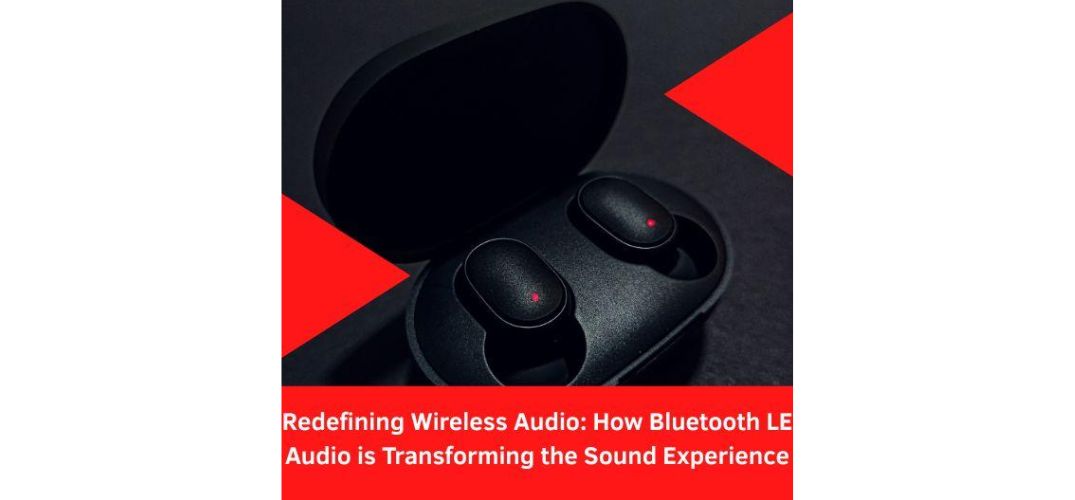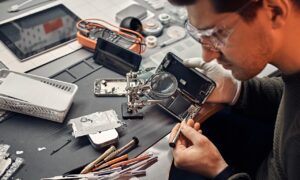In a world increasingly reliant on seamless connectivity, Bluetooth audio has become an indispensable element of our daily experience. This article, authored by Jyothiprakash Reddy Thukivakam with co-author Sayanna Chandula, dives into the transformative journey of Bluetooth audio technology and highlights innovations driving it forward. His research background adds depth and clarity to an otherwise technically dense topic, offering valuable insights into what lies ahead.
The Evolution of Bluetooth: From Utility to Ubiquity
Bluetooth technology began as a humble wireless communication protocol and has evolved into a sophisticated framework that powers millions of devices globally. It eliminated the clutter of wires and enabled wireless interactions across audio, data, and control functions. Versions have improved significantly, especially with the introduction of Bluetooth Low Energy (BLE), addressing power efficiency and scalability in modern applications.
Unpacking the Backbone: Bluetooth Profiles
At the core of Bluetooth functionality lie its standardized profiles—predefined rules that ensure devices interact harmoniously. Of particular interest are the Advanced Audio Distribution Profile (A2DP) for high-quality stereo streaming and the Audio/Video Remote Control Profile (AVRCP), which enables remote media control. These profiles are instrumental in establishing compatibility across headphones, car infotainment systems, and other consumer electronics.
Codecs: The Audio Alchemists
Audio codecs compress and decompress sound for streaming. While SBC ensures compatibility, it compromises quality. Advanced codecs like AAC, aptX, LDAC, and LHDC improve fidelity but trade off latency or battery life. These challenges sparked LE Audio—a reimagined standard balancing quality, efficiency, and performance for modern wireless audio experiences.
Breaking Barriers with LE Audio
LE Audio isn’t just a refinement; it’s a paradigm shift. Operating on the Bluetooth Low Energy radio, it introduces several key innovations:
- LC3 Codec (Low Complexity Communication Codec): The centerpiece of LE Audio, LC3 balances audio quality and power efficiency. It outperforms the SBC codec even at half the bitrate, enabling longer battery life and smaller device sizes without compromising audio integrity.
- Multi-Stream Audio: This innovation enables synchronized, independent streams to multiple devices. Unlike traditional TWS (True Wireless Stereo) systems, which rely on relays and buffering, LE Audio streams directly to each earbud. The result is reduced latency, improved stereo imaging, and enhanced user experience.
Shaping a New Audio Landscape
LE Audio also introduces broadcast capabilities through technologies like Auracast. This allows a single audio source to transmit to unlimited sink devices, paving the way for public audio sharing in airports, gyms, and theaters. It redefines accessibility, particularly for hearing aid users, enabling synchronized audio across various environments.
In terms of technical implementation, LE Audio uses unicast and broadcast isochronous streams. These mechanisms not only ensure efficient data transfer but also provide flexibility in designing both consumer and industrial audio solutions.
Efficiency Meets Excellence
LC3’s design underpins much of LE Audio’s promise. By coding individual audio channels independently and using a refined version of the Discrete Cosine Transform, LC3 reduces decoding complexity and latency. This makes it ideal for applications ranging from high-quality music playback to ultra-low latency voice calls.
Furthermore, testing environments have shown that LC3 can reduce battery consumption by over 50% compared to older codecs. This leap in efficiency is crucial for wearables, hearables, and other battery-constrained devices.
The Road Ahead
As Bluetooth Classic phases out over time, LE Audio is poised to dominate the next wave of wireless innovation. Its support for multi-streaming, low-power operation, and broadcast functionality means it’s well suited for the demands of future devices—from AR/VR headsets to smart home ecosystems and beyond.
While legacy systems like A2DP and AVRCP laid the groundwork, it is LE Audio that truly addresses the growing complexity and performance expectations of modern wireless audio environments.
In conclusion, LE Audio is not merely an upgrade but a fundamental transformation in wireless audio, redefining how we hear, connect, and interact. Its groundbreaking innovations are poised to reshape the way users experience media, engage in communication, and interface with their environments. The work of Jyothiprakash Reddy Thukivakam stands as a pivotal contribution to this progression, offering valuable insights and marking a crucial milestone in the advancement of wireless audio communication.





























